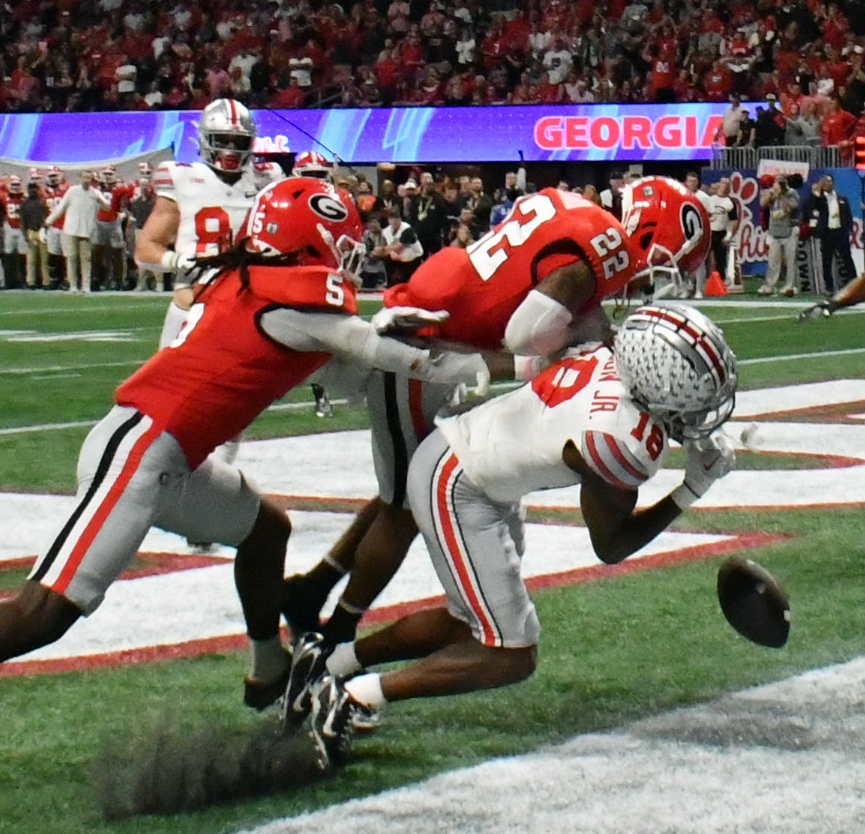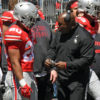
In an appearance on Joel Klatt’s Big Noon Conversations, Ohio State head coach Ryan Day said that more “common sense” needs to be involved when looking at potential targeting calls.
During the conversation, Day was asked by Klatt about changes he would make to rules in college football, and the conversation eventually shifted toward targeting. Asked about changes he would make to the rule, Day said he feels the sport has lost sight of why the rule was originally put in place.
“I think the first thing is it has to be common sense,” Day said. “We’re getting so much into the weeds on this that we’ve lost where we started on it. What was the reason why we did this? To protect young men. If someone’s launching at somebody’s head and they’re unconscious on the ground, that’s not what we want here. Sometimes we get into these slow motion things and we start to get so caught up in the little details and everything and it’s not realistic, sometimes, watching it in slow motion.”
Ohio State, of course, was significantly impacted by targeting – or a lack thereof – in the College Football Playoff semifinal against Georgia, when Bulldogs cornerback Javon Bullard appeared to lead with his helmet before contacting wideout Marvin Harrison Jr., briefly knocking him unconscious and forcing him out for the remainder of the contest after hauling in five catches for 106 yards and two touchdowns.
The play – which occurred late in the third quarter on a third-and-goal from Georgia’s 7-yard line – was reviewed for targeting but the officials ultimately decided not to flag Bullard for the contact, and the Buckeyes went on to kick a field goal to go up 38-24 before Georgia came back in the 42-41 loss for Ohio State. Day said in February that he made several calls after the game to understand why Bullard was not flagged for the hit, and said in his conversation with Klatt that too much stock is now being put into instant replay for calls.
“I think there has to be some sort of common sense, and I think we have to still trust the referees on the field and what they see,” Day said. “They’re there for a reason. And then if it’s egregious, you know, one way or the other, then that’s where the instant replay comes into play. But I think right now we’ve done is we’ve put so much into the instant replay that what you see in a slow frame isn’t really what’s going on in the field. We have to go back to the common sense of why the rule was even put into place.”
Targeting was not the only aspect of the game that Day would make changes to, however. Asked previously about rule changes he would like to visit, Day mentioned shortening the current hash marks – which are wider than those used in the NFL – to allow players more space to operate.
“Go back to the NFL model. Those hash marks were built for football long time ago,” Day said. “The NBA has made their adjustments, college has – they moved the three-point line. They’ve made adjustments.
“Today, with the type of athletes that we have, they’re faster, they’re bigger, they’re more powerful, putting the ball in a hash mark is just putting everybody in the small area of the field,” he continued. “We’re not playing outside the numbers to the field. I think putting the ball in the middle of the field, more like in the NFL, opens up the entire game.








